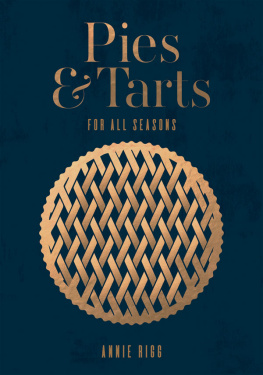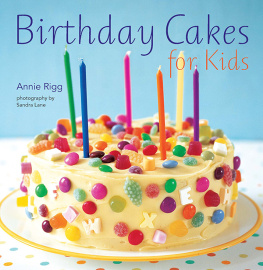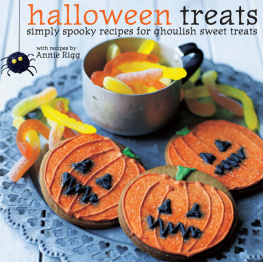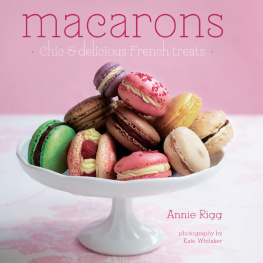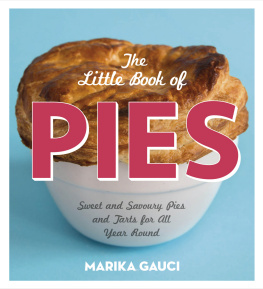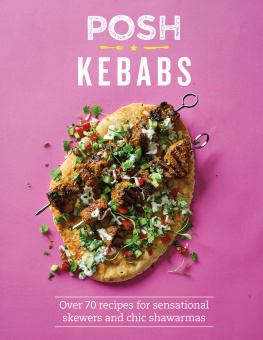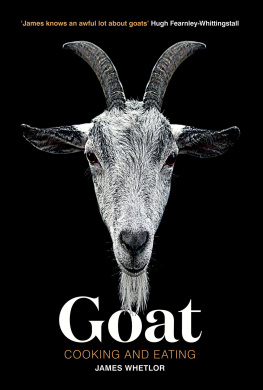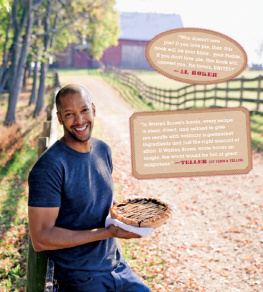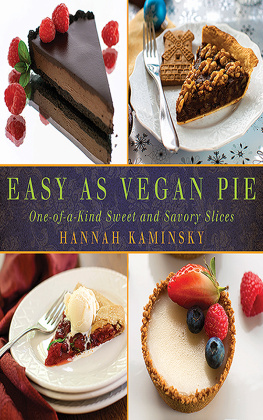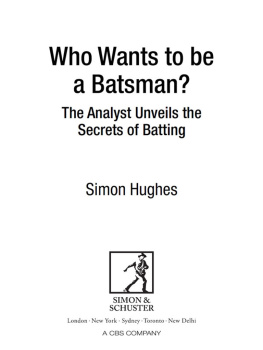Rigg - Pies and Tarts: For All Seasons
Here you can read online Rigg - Pies and Tarts: For All Seasons full text of the book (entire story) in english for free. Download pdf and epub, get meaning, cover and reviews about this ebook. City: London, year: 2018, publisher: Quadrille Publishing Ltd, genre: Home and family. Description of the work, (preface) as well as reviews are available. Best literature library LitArk.com created for fans of good reading and offers a wide selection of genres:
Romance novel
Science fiction
Adventure
Detective
Science
History
Home and family
Prose
Art
Politics
Computer
Non-fiction
Religion
Business
Children
Humor
Choose a favorite category and find really read worthwhile books. Enjoy immersion in the world of imagination, feel the emotions of the characters or learn something new for yourself, make an fascinating discovery.
- Book:Pies and Tarts: For All Seasons
- Author:
- Publisher:Quadrille Publishing Ltd
- Genre:
- Year:2018
- City:London
- Rating:4 / 5
- Favourites:Add to favourites
- Your mark:
- 80
- 1
- 2
- 3
- 4
- 5
Pies and Tarts: For All Seasons: summary, description and annotation
We offer to read an annotation, description, summary or preface (depends on what the author of the book "Pies and Tarts: For All Seasons" wrote himself). If you haven't found the necessary information about the book — write in the comments, we will try to find it.
Rigg: author's other books
Who wrote Pies and Tarts: For All Seasons? Find out the surname, the name of the author of the book and a list of all author's works by series.
Pies and Tarts: For All Seasons — read online for free the complete book (whole text) full work
Below is the text of the book, divided by pages. System saving the place of the last page read, allows you to conveniently read the book "Pies and Tarts: For All Seasons" online for free, without having to search again every time where you left off. Put a bookmark, and you can go to the page where you finished reading at any time.
Font size:
Interval:
Bookmark:

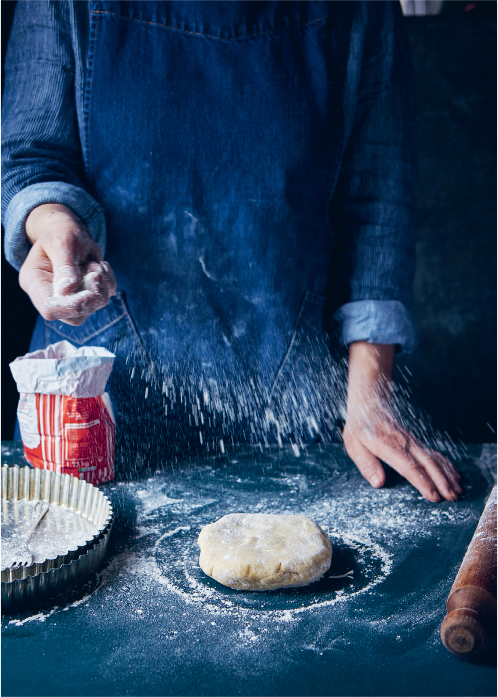
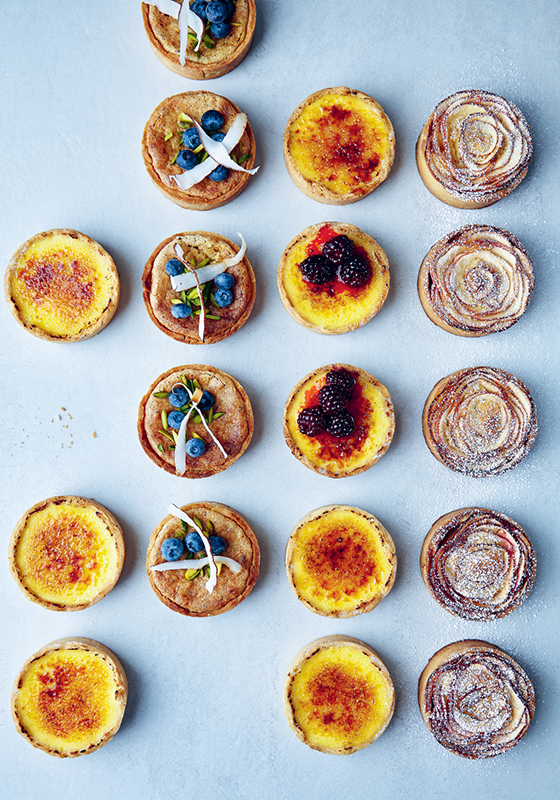

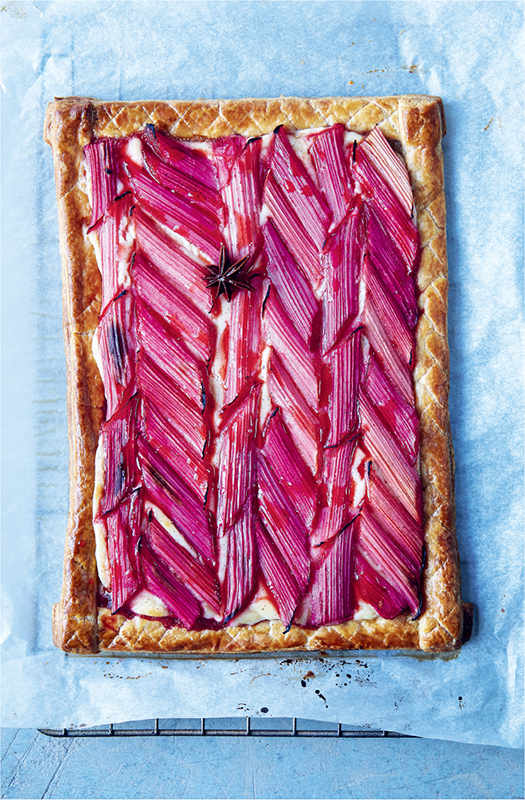
CONTENTS
Recipe note
Ingredients are listed in UK metric, followed by US cup/imperial measurements. Please follow one system of measurement when making the recipes.

The radios on, the next hour is clear, and the kitchen is tidy. You put on an apron and start rubbing cool cubes of butter into flour in a mixing bowl, your mind drifting off as the mixture turns to crumbs between your fingertips. Rolling out the pastry, lining the tart tin, crimping the edges and leaving it to chill while you move on to the filling; then watching it turn golden in the oven and smelling the buttery pastry as it bakes theres something uniquely soothing about making a pie.
Pies for little hands, pies for big appetites, delicate, decorated tartlets for fancy occasions, extravagant fruit-filled tarts and pies for Friday-night TV dinners; refined tarts that take advantage of the best seasonal produce and rustic tarts that can be cobbled together from what you have in your store cupboards.
Theres a pie or a tart for everyone and every season.
And what holds it all together is pastry. Pastry has a bad reputation, some folks believing that they cant make it. But like most cooking, and baking in particular, you need to follow a few rules. I have clumsy hands that are more suited to digging the garden than delicate pastry work and yet I can make light, flaky pastry. In my opinion a homemade pie should include homemade pastry (unless were talking filo pastry in which case Im the first in the queue to buy it). I recommend using good metal tart and pie tins the best your budget will allow. They will be less likely to buckle in the oven and, if looked after, will last years. My advice for making pastry without fear is on the next page.
This book is simply divided in two: sweet and savoury. The recipes range in size from delicate mini pies and tartlets that are just enough for a couple of mouthfuls, through pies thatll heartily serve one person, right up to large-scale centrepiece tarts to serve at a gathering.
Finally, whats in a name and when is a pie a tart, and a tart a pie?
A pie will often be baked in an oven-to-table dish rather than in metal bakeware, and will most likely be double crusted, in other words with a pastry top, sides and bottom. If it doesnt have a pastry top, then a pie will at least have some type of lid covering the filling. Lemon meringue pie and crumble-topped fruit pies are examples of this; however, pumpkin pie throws this theory out of the window. Hand pies, such as empanadas or pop tarts, are also in this club, but on the periphery.
A tart usually has a more delicate, buttery pastry bottom and sides with its filling open to the elements, and can be sweet or savoury. A tart is, however, rarely filled with meat and more likely to be an elegant affair. A galette is a simple tart thats free-styling; its a little more rough around the edges and has done away with the need for fancy bakeware.
Like most things in life, theres no clear-cut rule and anyway, breaking the rules is always more fun. So arm yourself with a rolling pin, dust your hands with flour and embrace the deliciously wonderful (and sometimes confused) world of pies and tarts.
Im a firm believer that anyone can make decent pastry but some simple rules should be followed to ensure best results. Most of the pastry recipes in this book are made by hand rather than in a food processor and I urge you to give it a go. It gives a better texture and saves on washing up. Start by finding a mixing bowl that you can easily get your hands into.
Always use good ingredients, unsalted butter and free-range eggs. Make sure your butter is fridge-cold unless otherwise instructed for pte sable you will need room-temperature butter but this is an exception rather than the norm. All liquids should be cold and eggs at room temperature. If your hands are warm, run them and your wrists under cold water for 30 seconds or so to cool them down.
Work quickly and have all the ingredients prepared before starting. By working quickly you will avoid the butter warming up in your hands and becoming greasy. Making sure that your bowl and work surfaces are cool will help, too.
Chilling pastry after mixing and again after rolling (and in between rolls and folds for puff pastry) is a vital step as this will allow the gluten in the flour to relax, the fats to firm up and cool down, and will make the resulting pastry easy to roll and less inclined to shrink during baking. Once baked, a well-rested pastry will have a better texture and be less inclined to toughness. I often chill my pastry overnight. Hot-water crust pastry is the exception to this rule and should be used while still warm or at room temperature, to make shaping easy.
When rolling out pastry, dust the work surface and rolling pin with plain flour and roll in even, smooth movements. Turn the pastry around by a quarter turn every now and then and dust the surface with more flour as and when needed to prevent it sticking. When making larger pies, roll the pastry to the required shape and thickness, then roll it around the rolling pin and gently lower it into the tart tin, starting at one side and unrolling the pastry as you go across. Gently press the pastry into the corners and ridges and trim off any excess from the top using a knife or by pressing the pastry against the top of the tin.
Preheating the oven properly is a key step to avoid pastry shrinking if the oven is not hot enough the pastry will melt rather than bake into a crisp shell.
I do not necessarily use non-stick tins but I do use good-quality ones and solid baking sheets that are less likely to buckle.
Some pastry shells need to be blind-baked before filling. Cover the base and sides of the raw, chilled pastry case with foil, pressing it into the corners and ridges for a neat inside edge to the finished pie. Half-fill with baking rice or dried pulses this will weigh the bottom of the tart down as it cooks. I prefer rice to baking beans as the rice nestles into corners, making a clean, sharp edge, with the added bonus that rice is cheaper than baking beans.
I sometimes use tart rings (individual and large sized) with straight edges as opposed to fluted tins, as they give a crisp, clean edge and straight sides to your tarts and an almost professional finish. They need to sit on solid baking sheets covered with parchment for lining and cooking. And, as they have no bases, the rings are simply lifted off once the tarts are cooked. And also, as they have no bases, youll never have that odd-sock situation when you have an assortment of tart tins with no matching bases. Individual or small rings are often sold in packs of 8 or 10 and are available in cookware shops or online.
I like generosity when baking and prefer tarts to be deep-filled, therefore all of the large tart tins and rings used in this book have a depth of 3.54cm [1in].
Font size:
Interval:
Bookmark:
Similar books «Pies and Tarts: For All Seasons»
Look at similar books to Pies and Tarts: For All Seasons. We have selected literature similar in name and meaning in the hope of providing readers with more options to find new, interesting, not yet read works.
Discussion, reviews of the book Pies and Tarts: For All Seasons and just readers' own opinions. Leave your comments, write what you think about the work, its meaning or the main characters. Specify what exactly you liked and what you didn't like, and why you think so.

